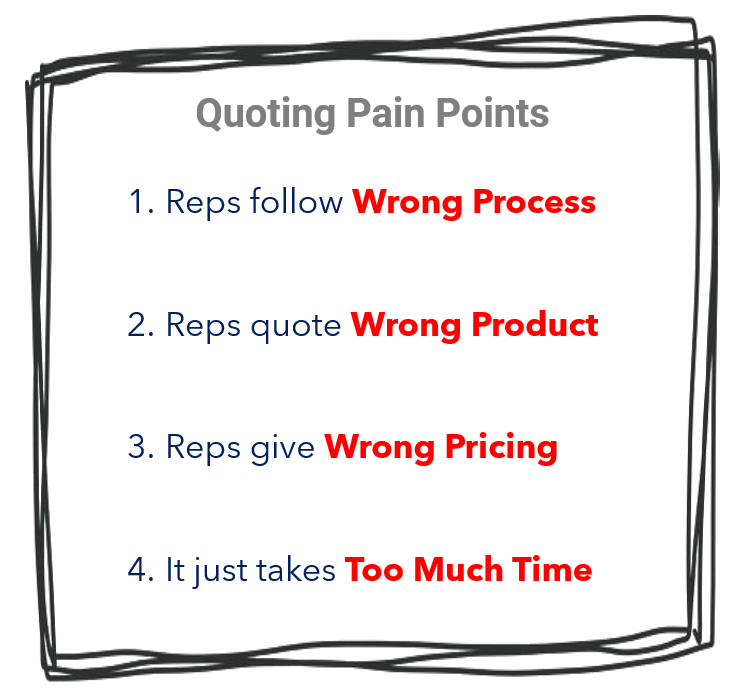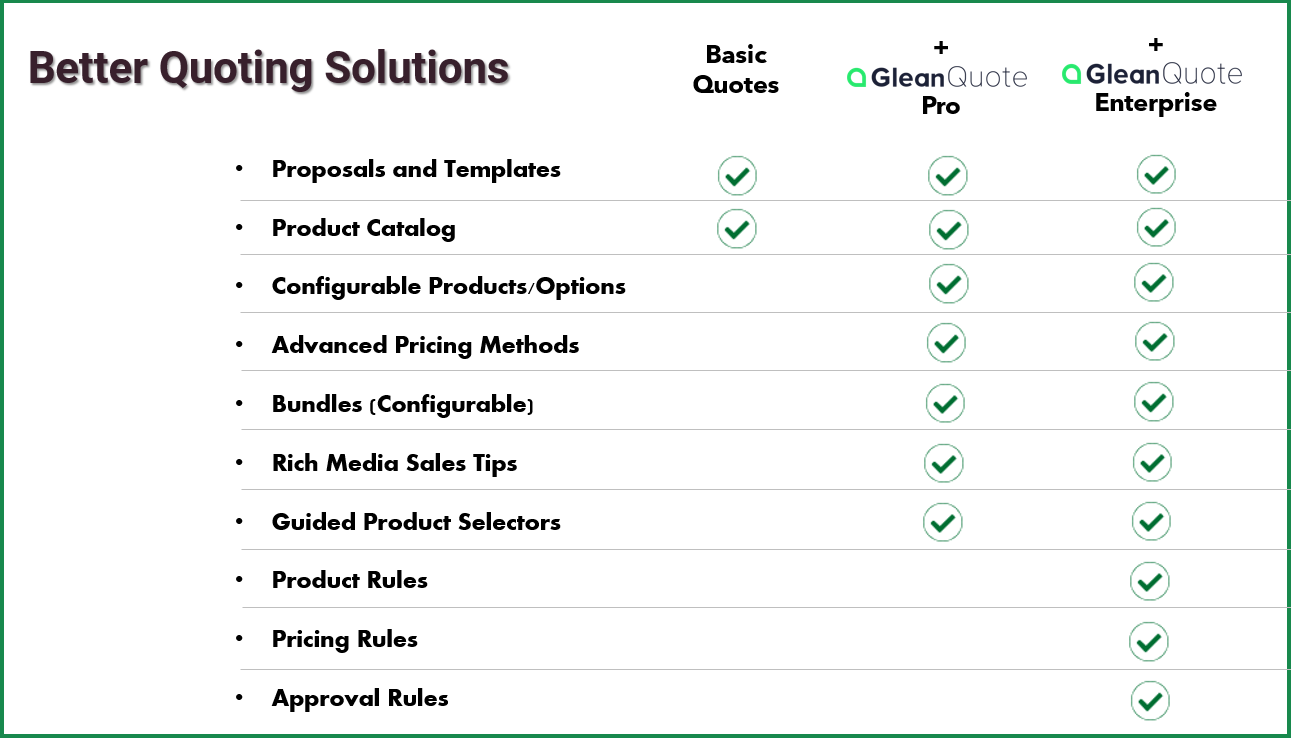You’ve trained up your sales team on the process of qualifying prospects, demonstrating features and benefits, handling objections, and closing. You’ve put a good CRM in place to help keep your sales team on track. Seems like your sales machine should be running smoothly, right?

But there are hidden cracks. Deals aren’t closing as often or as fast as they should because it’s taking too long to get quotes out or your team isn’t hitting the mark with their solutions. Margins are shrinking because items are mispriced or over-discounted on your quotes.
So, what’s the problem?
It could be your quoting process and the tools you are giving your team to succeed.
Customers are demanding customized solutions to meet their needs. One size fits all doesn’t cut it anymore. If you are asking your sales team to create these custom solutions using only your simple product database or vendor catalogs or spreadsheets, then you are leaving too much to chance.
Imagine your products and pricing as a forest and your sales team as solution hunters. What tools are you giving them to navigate your product and pricing forest?

If you only have a couple of reps and a handful of products, then a simple compass may be good enough to find the right path to a solution.
However, if your landscape is like many companies, your solutions can be more complex and there are many different paths to choose from and obstacles along the way. Some product and pricing experts in your company know the shortcuts and the safest routes, but how do you take that knowledge and instill it into your entire sales team? How do you give them a GPS or even a tour guide that leads them to the right solution?
This is one of the biggest challenges in the entire sales process, and it’s not getting enough attention.
We need to be able to give reps better tools to create better solutions.

We have to be able to embed product selection and pricing intelligence directly into the quote creation process, guiding the sales rep in the right direction at every decision point. That guidance can be passive in the form of sales tips and suggested selections, or it can be active in the form of filter and validation rules that prevent reps from making a mistake.
Make sure you are giving your solution hunters the right tools for the job. Don’t send them out into the forest alone and expect them to come out quickly with a solution that is the right configuration and the right price.
If you think your sales team is getting lost in the quoting forest, then contact us to see how GleanQuote’s Guided CPQ can help.